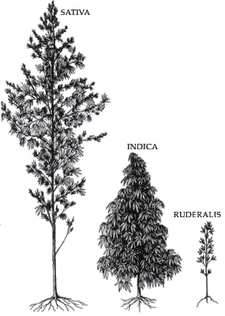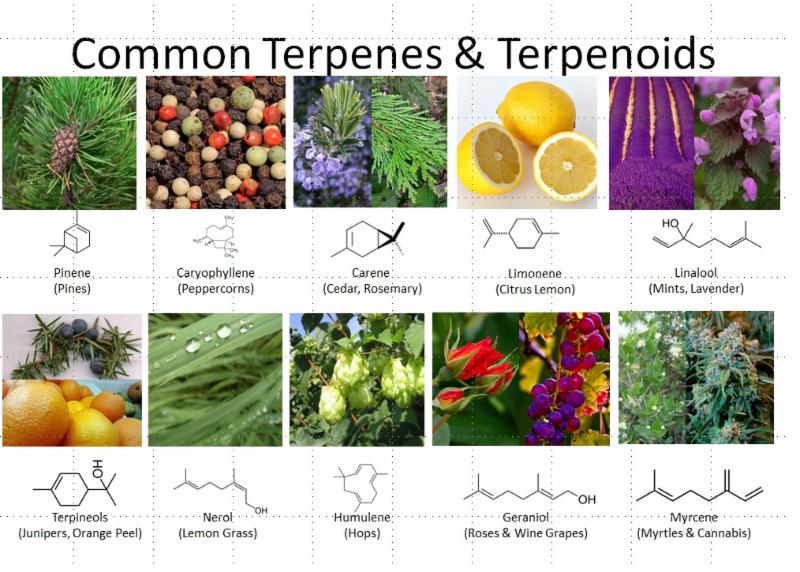Sativa, Indica, Ruderalis and Cannabis Sub-species
Category : Marijuana Research , Research
Cannabis Sub-species
Since the 1970s, cannabis has been divided into three sub-species (often confused as different species), C. indica, C. sativa, C. ruderalis, with ruderalis largely being considered ‘wild cannabis,’ not fit for medicinal or recreational uses. C. sativa is tall and laxly branched with relatively narrow leaflets, C. indica is shorter, conical in shape, and has relatively wide leaflets, and C. ruderalisis short, branchless, and grows wild in central Asia.
Sativa
A Cannabis sativa plant can have a THC/CBD ratio 4-5 times that of Cannabis Indica, that is to say sativa strains have high levels of THC and in comparison low levels of CBD. The Plants are generally tall and slender characterised by narrow serrated leaves and loose spear-like flower clusters that can be extremely resinous. Sativa cannabis plants can often reach 2-3 metres in height and will have longer flowering times, taking between 10 and 14 weeks to reach full maturity.
Sativas are well known for their cerebral high and primary effects that focus on the mind and emotions.
Indica
Cannabis indica is a short and stocky genus of the cannabis genus which is thought to have originated in the Hindu kush mountain range of central Asia. Due to to the short harsh summers and variable weather cannabis indica strains have to finish fast often reaching maturity after 8 weeks of flowering and pack on huge flowers and buds which are covered in resin. Indica strains are much shorter and stockier than sativa strains generally being around 1 metre in height.
Indica strains have a CBD/THC ratio that can be 4-5 times higher than sativa strains. This means that Indica strains have much higher levels of CBD than sativa strains. Indica strains are often used in the hindu kush region for the production of hashish and hash oils.
Indica strains are well know for their medical benefits due to their narcotic and sedative effect.
Ruderalis
Cannabis Ruderalis is a sub species of cannabis that originates from central Asia and is much shorter than cannabis sativa and cannabis indica. Ruderalis has developed in very harsh climates and begins flowering according to life cycle rather than photo period unlike the sativa and indica varieties. This means that ruderalis plants will begin to flower after 3-4 weeks from germination unlike the sativa and indica sub specie which need to receive less than 12 hours of light per day to begin flowering. Because of these reasons Ruderalis has been described as ‘auto flowering’.
Ruderalis is sometimes high in CBD but has very low levels of THC and has little recreational use. Various breeders have crossed ruderalis with indica to create autoflowerinng strains with higher levels of THC and CBD while retaining the autoflowering trait.
Hemp
A common misconception is the distiction between marijuana, which is bred for high cannabinoid content, and hemp, which is bred for industrial uses like fiber. However, any of the three subspecies can be bred as a hemp or marijuana plant.
The term hemp is used to name the durable soft fiber from the Cannabis plant stem (stalk). Cannabis sativa cultivars are used for fibers due to their long stems; Sativa varieties may grow more than six metres tall. However, hemp can refer to any industrial or foodstuff product that is not intended for use as a drug. Many countries regulate limits for psychoactive compound (THC) concentrations in products labeled as hemp.
Hemp is valuable in tens of thousands of commercial products, especially as fibre ranging from paper, cordage, construction material and textiles in general, to clothing. Hemp is stronger and longer-lasting than cotton. It also is a useful source of foodstuffs (hemp milk, hemp seed, hemp oil) and biofuels. Hemp has been used by many civilizations, from China to Europe (and later North America) during the last 12,000 years.






